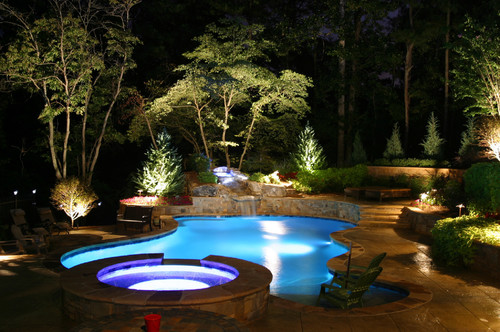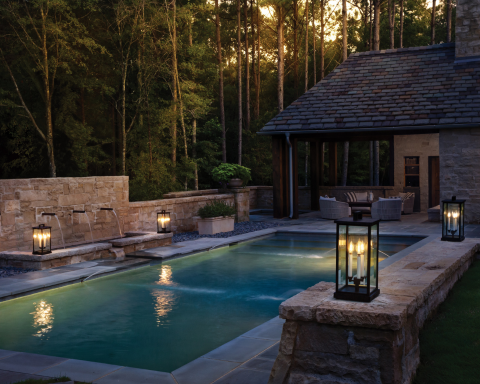Free Ground Shipping on Orders Over $49 Details & Exclusions Excludes Curb Side Delivery (LTL). Lower 48 United States Only.
Dec 2, 2013
What You Need to Know Before You Start Your Landscape Lighting Project
There are three things you want to accomplish with landscape lighting – safety, security, and showcasing your home. It is a must to have adequate lighting along paths, entries, driveways, and steps so that you, your family, and your guests are always safe, whether you are staying in your front lawn, garden, or backyard, coming home from work, or leaving your house at night. A well-lit exterior also helps to guard your home from burglary. And lastly, the right application of outdoor lighting can highlight and accentuate the parts of your landscape, such as trees, your outdoor pool, a pond, or certain ornaments, so these stand out during the evening and provide an impressive view of your home.
Types of Lighting
The phrase “less is more” applies to landscape lighting. Just a little light is enough to provide the illumination needed outdoors and highlight key spots in your garden or patio. There are now more choices available for outdoor landscape lighting. Lighting options now include a wide array of light intensity and color. Learn more about the options available for you and where they best fit in your home exterior.
Three Layers of Lighting
Just like indoor lighting, outdoor landscape lighting is generally categorized into three layers based on function.
- Overall lighting: provides illumination throughout the entire space.
- Task lighting: this is used for a specific purpose, such as to light a path.
- Accent lighting: this type of lighting is used to draw attention to a specific object or area.
Lighting Placement
Effective landscape lighting utilizes fixtures in a manner that accentuates your home and exterior while at the same time provides the right amount of illumination to ensure safety and securtiy. Here are the basic spots that require outdoor lighting:
- Paths – a well-lit path provides a welcoming gesture to guests while providing the necessary lighting to ensure safe navigation.
- Entries – for added security, it is recommended to place lights overhead or on both sides of your front, back, and side entry doors.
- Steps – also for safety. Lighting can be installed either on the risers or the treads.
- Decks or Patios – lighting may be necessary at certain task areas on a deck or patio, such as a cooking spot, railing or seating areas.
- Driveway – mainly for safety purposes.
- Architectural Features – washing or grazing a wall with the use of outdoor lighting is a great way to highlight decorative features, such as stonework and textured finishes.
- Gazebos, Trellises, or Pergolas – landscape lighting can be used to accentuate these focal elements in an outdoor landscape.
A Few More Things to Consider
When there is too much lighting, this creates light pollution that goes through indoor rooms, produces glare that temporarily blinds people, washes out the view of the stars, and also wastes energy and money. To prevent light pollution, keep in mind these tips:
- Position lights carefully – install lights during the evening to see how they actually look and adjust to ensure that these are properly placed to highlight elements in your landscape.
- Minimize wattage – outdoor lighting does not require intense illumination. Use low-wattage bulbs.
- Shield bulbs – utilize fixtures which have reflectors and shielding to focus light where you want it.
- Control the light – use controls, dimmers, timers, or motion sensors to turn on lights only when needed.






